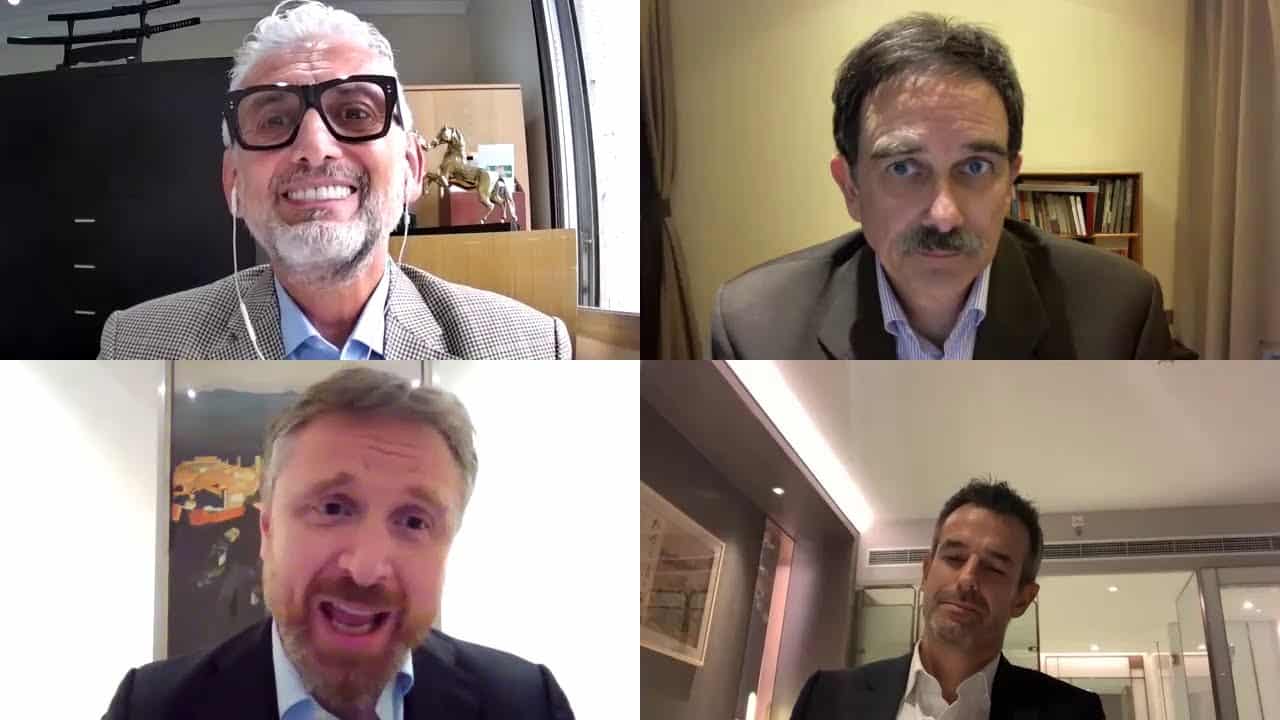BRIC Leaders Share Pandemic Learnings
We found ourselves in a VUCA world – volatile, uncertain, complex and ambiguous – long before COVID-19 found us. But the pandemic has made change faster and more volatile, harder to predict, more uncertain, more difficult to analyze, more complex, more ambiguous and more challenging to interpret.
Nowhere more so than in the global environment of Life Sciences and Healthcare.

Last week, a webinar organized by the LS&H practice of Cornerstone International Group brought together senior industry executives from Brazil, China and India – BRIC countries sharing exceptional growth prospects but with widely different experiences today.
“We are living on the same planet and enduring the same storm but not in the same boat,” says Gaetano Crupi, President and General Manager of Bristol Myers Squibb in Brazil.
Gaetano was joined on the panel by Stephane Mascarau, General manager, Servier in China and by Luca Visini, Managing Director India subcontinent, Eli Lilly and Company, India. The webinar was moderated by Eric Bouteiller, Head of Global Practice, Life Sciences & Healthcare.
Managing Uncertainty
Gaetano described a situation where one size does not fit all, but where basic preparations are essential to managing uncertainty. Avoiding big stock outs, quickly putting people to work without compromising safety, quickly adopting to digital transformation of processes and interactions and recognizing social workers & doctors who are putting their life on line were steps shared by these leaders.
A great culture was an important asset for all of the organizations navigating during crisis.
Human Capital
At the end of the day, leadership is about getting things done and delivering value for all stakeholders. So what does effective leadership in a crisis look like?
People look to their leaders for guidance when confusion and panic ensue. Hence much of the engagement and focus which a team demonstrates is the result of the experiences their immediate leaders created.
Being visible and over-communicating during a crisis was the success mantra of all the leaders on the panel. Leading effectively empowers teams to stay focused and aligned amid uncertainty. Measures adopted by these leaders to build bonds and reduce anxiety were summed up as follows:
“Tone and tenor of interactions, sharing pride, engagement programs and surveys, well-defined WFH practices, a strong culture and sense of belonging, patient first policy, engaging with family of employees, slowing down conferences, and work-life balance including mental health.”
Key traits these leaders look for when hiring employees and leaders were also shared: “I would look for an agent of change, a team player with integrity, excellence, learning agility, resilience and ability to adopt digital tools.”
Diversity & Inclusion
“Building and maintaining a diverse workforce leads to better business outcomes—increased cash flow, innovation, readiness for change, and more”, according to Shannon Howard, Product Manager at Predictive Index.
There is growing significance placed on creating environments where a variety of different voices are encouraged and heard. These voices come from people who may or may not be of the same gender, race, or ethnicity.
The three leaders on the panel were unanimous in their view that a diverse workforce would not happen on its own.
“You cannot wait for inclusion to happen,“ says Luca Visini. “You have to drive it and if you don’t drive it, it will not happen.”
Panelists agreed that inclusion for them involved accepting gender, religion and different thought patterns. Building teams with diversity is extremely important for the global organizations.
Leadership Practices
For any organization to succeed, it needs to have strong leadership. People who can manage their teams effectively in order to get the most productivity out of them are essential. But what makes a great leader?
Leadership qualities are the personality traits that a leader possesses – for example, vision, tenacity, EQ, charisma, confidence, etc. Leadership practices are actions and strategies that leaders will take and implement in order to consistently help their team better themselves, and attain growth.
How do you transition from a Manager to Leader? How do you lift yourself up from the operational to the strategic? What are the secrets to providing visionary leadership? How can you inspire and lead change in your organization?
What are the practices the panelists follow and their advice to young professionals were some of the questions posed to the leaders. Following are few points which came up during discussion.
Manage Yourself First
The first step towards leadership is to manage one’s self and have an ethical moral compass. Leaders need to have healthy emotional intelligence. Get to know yourself – what gives you energy and what takes away energy? Own your mistakes as well as the good things about you.
Physical & Mental Fitness
Body and mind balance, importance of physical fitness, meditation, yoga and exercises, pursuit of hobbies – these are regularly practiced by the panelists to achieve the right balance which gets translated to their organisation.
Wider Perspective
Leaders need to have purpose and should aim high. They should be able see things globally in a wider perspective. It is good to have experience abroad and young professionals should seek international work opportunities.
Empower People and teams
A leader alone cannot achieve everything by himself/herself. Each leader needs a team.
Building and motivating teams with common purpose, enabling people, giving feedback, spending more time, and showing the way were some of practices recommended.
View the full presentation, Human Capital in Life Sciences & Healthcare.


